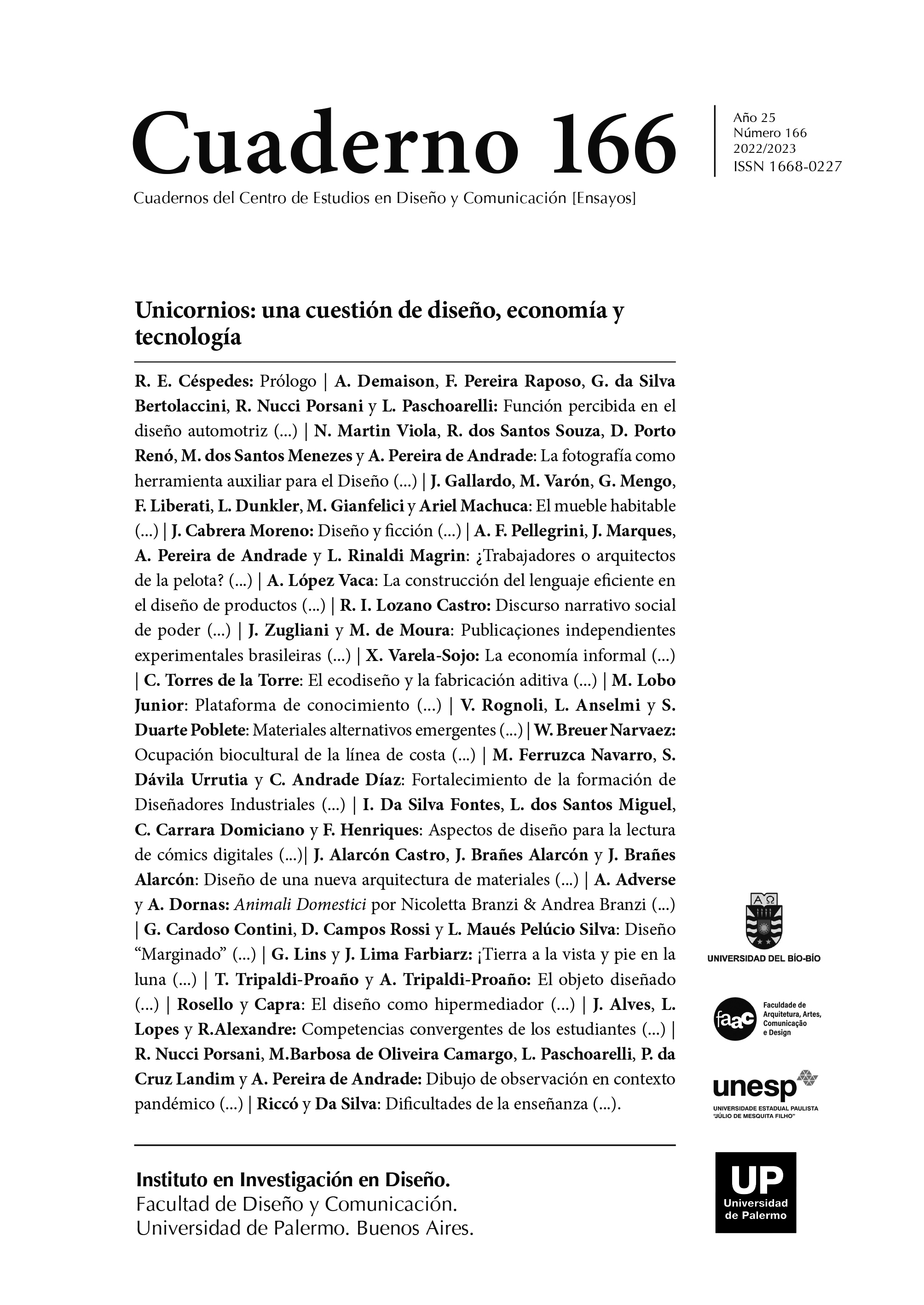Diseño de una nueva arquitectura de materiales para el sector de la madera
Abstract
The current approaches referred to the design of new materials are related to the existence of a greater awareness of energy dependence and the unfavorable consequences for the economy. The increase in environmental regulations for consumers forces the industry to look for new production technologies and environmentally friendly products. The article presents an approach for the design of a new architecture of materials, to reduce the environmental impact, through the use of industrial waste from the Chilean wood manufacturing sector. Given the characteristics of energy saving and structural lightness that principles of nature offer, it is planned to integrate bionics as a relevant part of the definition.
References
Alarcón, J., Rognoli, V., Llorens, A. (2020). Diseñar para un escenario social incierto: el valor del enfoque materiales Do-It-Yourself y economía circular. Interciencia, 45(6), 279-275.
Arruda, A. (Ed.). (2020). Bionica e Design. Experiencia memorable de 30 protagonistas. Sao Paulo, Brasil: Blucher. 398 pp. https://www.blucher.com.br/livro/detalhes/bionica-e-design- 1595/arquitetura-e-design-117
Beylerian, GM, Dent A, & Quinn, B. (2008). Ultramateriales. Formas en que la Innovación en los Materiales Cambia el Mundo. Barcelona-Spain: 1st ed. Blume.
BingChung, C.; Silva, E.; Kikuchi, N. (2001). Advances in computational design and optimization with application to MEMS. International Journal for Numerical Methods in Engineering. 52, (1‐2), 23-62.
Blanpain, B., Meskers, C., Olivetti, E., Apelian, D., Howarter, J., Kvithyld, A., Mishra, B., Neelameggham, N., & Spangenberger, J. (2016). REWAS 2016: Towards Materials Resource Sustainability, Conference proceedings, Nashville.
Camere, S., & Karana, E. (2018). Fabricating materials from living organisms: An emerging design practice. Journal of Cleaner Production, 186, 570-584.
Cenem. (2019). Estadísticas: Residuos en Chile - Reporte MMA 2018. El Journal del Packaging. Recuperado el 30 de junio de 2020 de http://cenem.cl/newsletter/enero2019/detalle-21.php
Dicks, H. (2016). The philosophy of biomimicry. Philosophy & Technology, 29(3), 223-243.
Manzini, E. (1986). La materia dell’invenzione. Materiali e progetto. Arcadia, Milano.
Lima, R., & Luis, J. (2017). Caracterización de la cadena de producción y comercialización de la industria forestal: estructura, agentes y prácticas.
López, Y. M., González, M. G., & Rodríguez, E. M. (2015). Impacto ambiental de residuos industriales de aserrín y plástico. Usos para la industria de tablero en Cuba. Avances, 16(2), 91-99.
López, M., Rubio, R., Martín, S., & Croxford, B. (2017). How plants inspire façades. From plants to architecture: Biomimetic principles for the development of adaptive Mensaje N° 182-361/. (2014). Mensaje de S.E. el Presidente de la República con el que se inicia un Proyecto de Ley Marco para la gestión de residuos y responsabilidad extendida del productor.
Ministerio del Medioambiente de Chile. (2016). Ley de N° 20920, establece marco para la Gestión de residuos, la responsabilidad extendida del productor y fomento al reciclaje. Biblioteca Nacional del Congreso de Chile file:///C:/Users/pc11/Downloads/LEY20920_01-JUN-2016%20(1).pdf
Ministerio del Medioambiente. (2017). Ministerio de Medioambiente de Chile, Ley de Reciclaje http://leydereciclaje.mma.gob.cl/ architectural envelopes. Renewable and Sustainable Energy Reviews, 67, 692-703.
Oporto, C. (2009). Estrategia ambiental para mantenciones programadas de MASISA S.A. Planta Ranco (Doctoral dissertation, Universidad Austral de Chile).
Peters, T. (2011). Nature as measure: The biomimicry guild. Architectural Design, 81(6), 44-47.
Prodintec, F. (2006). Diseño Industrial.Guía Metodológica Predica.“Cómo integrar el diseño en su empresa”. Asturias: Gráficas Rigel.
Soto, G., & Núñez, M. (2008). Fabricación de pellets de carbonilla, usando aserrín de pinus radiata (D.Don), como material aglomerante. Maderas. Ciencia y tecnología, 10(2), 129-137.
Thackara, J (2013) Diseñando para un Mundo Complejo. Acciones para lograr la sustentabilidad. Editorial Designio, México.
Van Hemel, C., & Cramer, J. (2002). Barriers and stimuli for ecodesign in SMEs. Journal of cleaner production, 10(5), 439-453.
Los autores/as que publiquen en esta revista ceden los derechos de autor y de publicación a "Cuadernos del Centro de Estudios de Diseño y Comunicación", Aceptando el registro de su trabajo bajo una licencia de atribución de Creative Commons, que permite a terceros utilizar lo publicado siempre que de el crédito pertinente a los autores y a esta revista.


